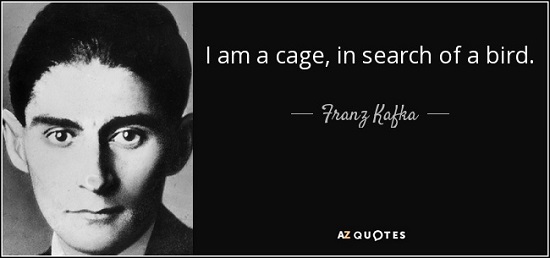We seem to be heading into a confrontation between the two forces of Modernism: the primacy of the individual versus the increasing technological and economic might of the central state.
In Kafka’s Nightmare Emerges: China’s “Social Credit Score” (May 7, 2018), I wrote about Kafka’s vision of a bureaucratic nightmare emerging in China’s “Social Credit Score.”
The idea here is the central state sets up a vast, pervasive surveillance system to monitor all its citizens, and assigns a social score to each citizen based on his/her compliance with regulations and social norms as defined by the state.
In Kafka’s nightmarish novels, an opaque, impenetrable and impersonalized bureaucracy controls the social and economic structures of everyday life.
China’s system is based on a social score, but one’s social score has enormous economic consequences: the citizen with a low score can be denied rights to travel, his/her children can be denied access to educational opportunities and so on.
As I noted, there doesn’t appear to be a legal process for challenging one’s low social score, or much transparency on the various violations and weighting of violations that go into calculating each individual’s score.
I’ve often written about the difference between force and power: as per Edward Luttwak, force (coercion) is costly and clumsy, while power works via persuasion, grudging or otherwise.
China is attempting to create a system that is extremely coercive (a low score generates severe punishments) but also seeks to internalize the social scoring system: no authority figure is required to force individuals to comply; each individual internalizes the rules and modifies their own behavior accordingly.
This aligns with China’s historic reliance on internalized social norms to control its vast populace. Even in the Song Dynasty (960 AD to 1279 AD), the central state relied on the internalized social norms of Confucian values to “order society” with minimal coercion. A judiciary system handled gross violations of the legal rules and petitions for redress, but in effect the state ruled through the family and community hierarchies created by Confucianism.
I bring up Kierkegaard in this context as one of the first “modern” philosophers to question state control of the church and religion (the Western analog of Confucianism) and propose the primacy of the individual’s relationship with God and inner moral compass — what he termed the knight of hidden inwardness.
The primacy of the individual is the core of Modernism, as each individual discovers the mysteries of God in their own way and time, and creates their own identity via their own choices and commitments. This is the essence of Existentialism and Modernism, which rejects the ultimate authority of centrally controlled norms.
In art and literature, Modernism frees individuals to work outside of established genres and flout traditional rules governing art and literature, and indeed, the creative process.
We seem to be heading into a confrontation between the two forces of Modernism: the primacy of the individual versus the increasing technological and economic might of the central state. This conflict is largely beneath the surface of everyday life and the “news,” but it may play a key role in the coming Great Crisis that’s due by 2025.
As for those who claim to have refuted or even debunked (heh) concerns about the teleology of China’s social control system, let’s paraphrase Zhou Enlai: it’s too early to tell.
